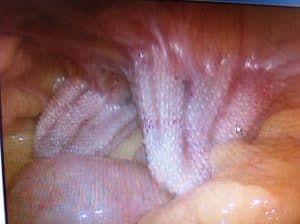
A groin (inguinal) hernia occurs when part of the intestine bulges through a weak spot in the abdominal wall at the inguinal canal. Pasquariello Jr.When part of an organ protrudes through an abnormal opening or in an abnormal way, this is called a hernia. The good news is that hernias are common and easily treated with no adverse long-term health effects.Ĭontributed by: Patrick S. Most older children and teens who are diagnosed with a hernia actually have had a weakness of the muscles or other abdominal tissues since birth.

Teens can develop sports hernias, an injury of the inguinal area caused by repetitive twisting and turning. Your child will need another surgery to fix this hernia. The intestines may protrude through the abdomen around a surgical incision. The incisional hernia occurs after abdominal surgery. Diet modifications and/or medications can cause relief, although sometimes these hernias require surgery. However, you child may have heartburn, chest pain and indigestion. While these hernias are common, oftentimes they are small and don't cause any issues. This type of hernia happens when the upper part of the stomach bulges through a weak opening in the diaphragm where the esophagus meets the stomach. Surgery is required to fix this type of hernia. In this type of hernia, which occurs most frequently in boys, there is a protrusion through the abdominal muscles between the chest and the belly button, causing a lump in that area. Umbilical hernias usually heal on their own by the time your baby is a year old.Įpigastric hernias.

Your baby's belly button may look enlarged and swollen. They happen when the opening in the abdominal wall, where the umbilical cord exits the abdominal wall, fails to close.

These hernias are common in newborns and babies younger than 6 months. These hernias are more common in children who were born prematurely. This occurs when the inguinal canal (a small passage through the lower abdominal wall) fails to close before birth. This occurs when a weak spot develops in the lower abdominal muscles and tissues are able to push through the weak spot. The most common areas for hernias to appear are in the abdomen, groin and belly button. In girls, the swelling is usually in the labia or the groin. In boys, the protruding piece of intestine may enter the scrotum, which can cause swelling and pain. The majority of hernias in children - about 80 percent - are inguinal hernias, which means they are in the lower part of the abdomen, near the groin. In most cases, hernias are congenital, present at birth, but may not be visible till later in life. But in fact, many young children, toddlers and babies develop hernias - and it's pretty clear that they aren't pumping iron at the gym or moving heavy furniture. Like most people, you probably associate hernias with lifting heavy weights.


 0 kommentar(er)
0 kommentar(er)
